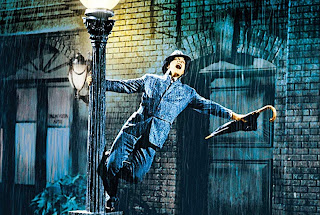I heard the term POP on the radio. It stands for "Probability of Precipitation". The explanation of it was pretty simple, but there is a little more to it than I thought. What it measures, of course, is the chance you are going to get rain, snow or whatever, falling on you that day. A fairly simple formula:
POP = (probability any precipitation falls in the area) x (predicted area of coverage).
Examples:
The meteorologist thinks about half the region will get wet. There is a 20% chance it rains somewhere in that area. So, 0.50 x 0.20 = 10% chance of rain.
There is a 70% chance of rain falling somewhere in the region. The coverage is almost total, say 90%. So, 0.70 x 0.90 = 63% chance of rain. That is, a 63% chance that it will rain on you.
By the way, that number doesn't tell you anything about how much it might rain. Although by "precipitation" they do seem to hold to there being at least a hundredth of an inch falling.
I missed out. I think I would have liked to have been a meteorologist.





